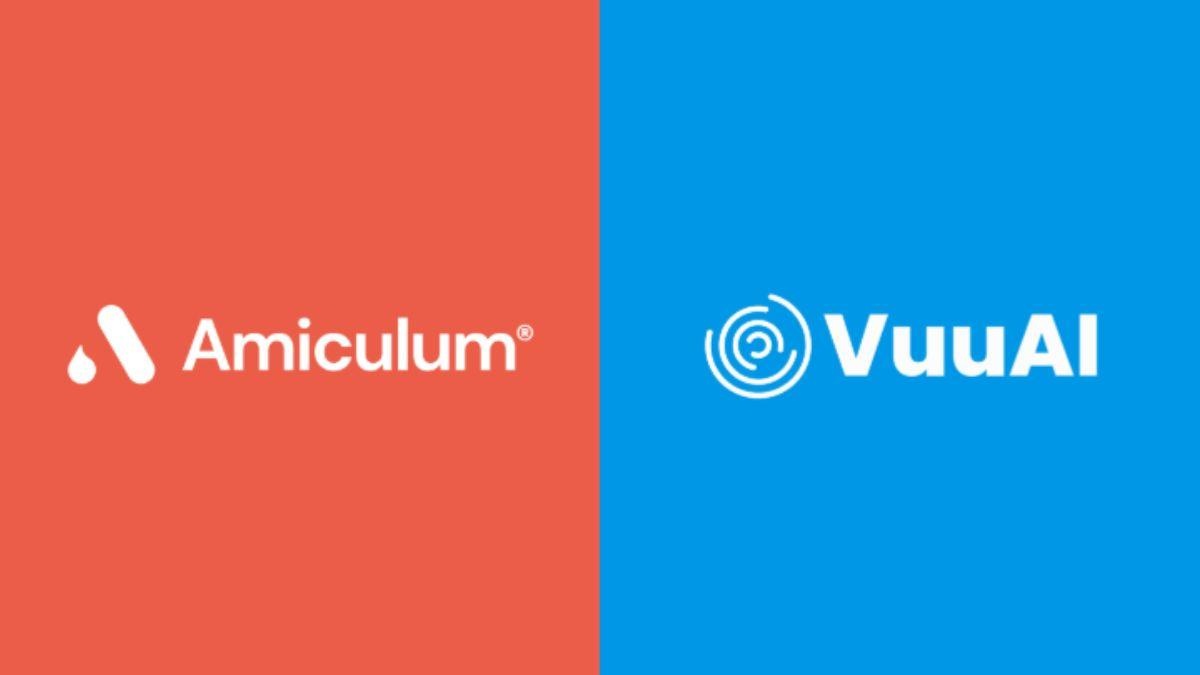How can the NHS deliver care in a digital age?

The mutually beneficial exchange of knowledge and technology between pharma and the UK's NHS is being held back by lack of clarity around NHS internal processes and the fact that the external organisations do not recognise the value to be gained from partnership with the health and care system.
It's not easy to understand the current state of digital innovation in the UK healthcare system. Comprehensive policies and frameworks for action are constantly published highlighting the potential benefits and cost savings that digital technology can bring. However, they usually have little detail on how and when they must be implemented, and by whom.
The current situation is one of increasing demand, restricted resources, and absence of clarification on the future funding settlement for health and care services. Digital technology and the resulting annual efficiencies would contribute towards closing the reported £30 billion gap between resources and patients' needs by 2020.
Despite being ranked the highest-performing health system out of 11 industrialised countries by The Commonwealth Fund, the NHS is ranked only seventh when it comes to the number of primary care physicians who can electronically exchange patient summaries and test results with other physicians outside their practice.1
Pharma and others who lead the way in digital innovation for healthcare would like to partner with the NHS to implement new programmes and services on a wider scale. However, confusion around NHS internal processes and the value that a partnership could bring to the outside organisations is holding back the exchange of knowledge and technology.
While the NHS is still defining its own holistic strategy and direction for realising a fully integrated and interoperable system over the next five years, what is the role of pharma companies in facilitating the deployment of the much-touted digital innovation programmes within the health and care system?
The current NHS
Over the past 15 years the NHS has reduced avoidable deaths by 20 per cent, cut most long waits for operations from 18 months to 18 weeks and public satisfaction with the NHS has doubled.2
From a digital point of view, some progress has also been made:
• 96 per cent of GP practices installed digital clinical record systems following the incentives introduced in 1990s
• Heart surgeons now share data on their individual outcomes, which has resulted in mortality rates falling by a third for some procedures, translating to around 1,000 fewer avoidable deaths each year.3
The NHS is already achieving patient benefits through digital technology:
• 85 per cent of doctors routinely receive electronic prompts about potential problems with Rx dose or interaction
• 76 per cent of practices routinely send patients reminders for preventative or follow-up care. In this area, the UK is only surpassed by Australia (82 per cent) and New Zealand (92 per cent).1
However, data integration and mobility still lag behind.
"Major contractual arrangements are due to expire, which could offer the perfect opportunity for fundamental changes in the way information is stored and shared"
The NHS has already recognised the need for change to support a growing and ageing population. Over the next three years, major, long-term contractual arrangements are due to expire, such as for N3, the NHS's secure network, which could offer the perfect opportunity for fundamental changes in the way information is stored and shared. It could also allow the introduction of new and innovative systems, which are mandatory for integration and interoperability.
The Five Year Forward View
In October 2014 the NHS published The Five Year Forward View outlining the current challenges and the potential that new technologies can bring to care delivery.
It offers a sustainable strategy to prevent, or at least reduce, the Health and Wellbeing Gap, Funding and Efficiency Gap, and Care and Quality Gap. The required changes are summarised below:
1. The Health and Wellbeing Gap:
a. Reduce the high level of preventable illness by incentivising and supporting healthier behaviour.
b. Empower patients to manage their own health by making informed choices and avoiding complications.
c. Engage communities and involve them in the decision-making process on the future of health and care services by supporting carers and charities, and encouraging volunteering in the community.
2. The Funding and Efficiency Gap:
a. Increase local influence over the NHS budget for local populations in a similar way to Greater Manchester, where £6 billion in the health and social care budget was taken over by the region's councils and health groups.
b. Reduce burden on frontline services by supporting a modern workforce and leveraging the information revolution.
c. Accelerate useful health innovation that will contribute toward driving efficiency and productive investment.
3. The Care and Quality Gap:
a. Take down existing barriers between primary care and secondary care, community services and hospitals by leveraging and combining successful emerging models that have been implemented at a local level.
i. (For example, in Airedale, nurses and consultants provide video consultations to nursing and residential homes without leaving the hospital, as well as outside normal hours, reducing emergency admissions by 35 per cent and A&E attendances by 53 per cent.2)
These three gaps are exacerbated by a lack of integration across health and care services, and the role that digital technology can play to develop a fully integrated and interoperable system is irrefutable.
"The system architecture is organisational rather than user-focused, and there isn't any transmission of data beyond the hospital boundaries"
The information is there; for example, The Spine is a collection of applications, services and directories that support the exchange of information across national and local NHS systems. It handles over 200 million interactions a month and hosts over 45 million summary care records, which are accessed by healthcare professionals across different hospital departments.3
However, the system architecture is organisational rather than user-focused, and there isn't any transmission of data beyond the hospital boundaries.
Digital innovation is highly supported by data and the opportunities that the integration of datasets and communications channels provides. Therefore, it will be extremely difficult to deploy wide-scale and integrated digital solutions before the NHS defines clear processes and standards for its own structure.
Framework for action
The Department of Health (DH) established the National Information Board (NIB), which published Personalised Health and Care 2020 at the end of 2014. This outlines the premise of a more tech-enabled NHS that will build on existing capabilities, leveraging and developing successful initiatives currently being progressed at a local level across the UK.
The NIB identified key areas of priority and explored case studies to support proposals. The main priorities identified were:
• Patient and carer empowerment
• Support of care professionals in accessing and making the best use of data and technology
• Increasing and sustaining public trust by making the quality of care transparent and assuring the best value for taxpayers
• Supporting innovation and growth.
DH Informatics Accountable Officer Will Cavendish said, "The National Information Board for the first time agreed the strategic priorities for data and technology in health and care and now this detailed work on implementation is being taken forward with the same shared leadership. We need to work together to improve health and care for patients, carers, service users and citizens".4
"...it will be the first time that we have detailed roadmaps and processes for the deployment of data and digital technology within the health and care system"
If the NIB succeeds in its objectives, it will be the first time that we have detailed roadmaps and processes for the deployment of data and digital technology within the health and care system.
The NIB framework also laid out milestones for the next five years, including:
• Patient access to GP records online from March 2015
• Use of the NHS number as primary identifier from April 2015
• The agreement on national technical and professional data standards by April 2015, which is required to achieve digital real-time and interoperable care records (NB: April has come and gone)
• Digital Maturity Index key indicators for NHS trusts to be published via NHS Choices by October 2015
• Paper-free records by 2018
• All care records will be digital, real-time and interoperable by 2020.
To date, with regard to the GP online records that were due in March 2015, the NHS Choices website states, 'From April 2015 all GPs should give their patients online access to their records', suggesting that this deadline has been pushed out by a month.
However, a couple of calls to surgeries across London revealed that not all GPs are offering this service either because "it is not live yet" or because "it is not safe". Others are offering access to limited information only "currently you can only see prescriptions and allergies, not medical notes" (as of 4 June 2015).
No additional updates have been provided other than the publication of the various work streams that will enable the digital priorities. These work streams define the objectives, governance and plans, but not the expected detailed roadmaps. According to the latest release, "Taking forward proposals for digital health and care" published on 4 March 2015, the majority of roadmaps will be produced between March and June 2015. That said, given the unmet target for online patient record access and with the recent general election, whether these roadmap deadlines will be met or not is open to debate.
New principles arising
Personalised Health and Care 2020 moves away from the 'one-size-fits-all' approach, which led to disengaged local communities and could not respond to local needs. It also rejects the 'letting a thousand flowers bloom' approach, which brought the NHS to its current position: a wide variety of systems, software and services that don't communicate and don't allow the necessary integration for a sustained information system.
Some new rules for the relationship with subcontractors and partners are being established, which aim to break down silos, join up services and reduce duplication:
• A collaborative approach will be promoted to include service users, carers, and healthcare professionals in an open and transparent decision-making process
• There will be tight standards and definitions with regard to interoperability, but local decision-making will be encouraged and supported
• The increasing use of open-source software will be encouraged, taking into account the total lifetime cost of ownership of the solution and including exit and transition costs. For example, NHS England will adopt Vendor Neutral Archive (VNA) as a standard format to store everything from X-rays to scanned letters and patient notes. This will avoid lock-in with proprietary systems and allow easy sharing of data across the NHS.
NHS England Open-Source Programme head Peter Coates explained in an interview with The Inquirer, "It's fair to use the terms ['open source' and 'open standards'] interchangeably here because there are some systems where an open source solution isn't appropriate, but we would still want that information to be compatible and accessible in a common output".5
Funding restrictions encourage the use of commodity technologies and simple procurement solutions like G-Cloud, a set of simple and legally-compliant frameworks that enable NHS organisations to buy ICT services. There is also the Digital Services Framework for procurement, which was developed to give the government easy access to suppliers with the right digital capability to help design and build public services that are digital by default, and focused on user needs.
Pharma companies need to be aware of these new principles, and align their own services with NHS requirements if they wish to pursue a partnership or have their services included in the health and care system. However, an open source application program interface (API) could be developed and then implemented and shared by competitors – something any company would need to take into account before jumping into a partnership with the NHS.
The role of pharma
Existing initiatives prove that pharma companies and other organisations are progressing the NHS's digital priorities by focussing their innovation efforts on the provision of services beyond the pill that can increase patient outcomes and cost savings.
For example, Closercare, MSD's patient monitoring service, was provided to patients with heart failure and COPD within the Harrow Clinical Commissioning Group organisation in 2014. It has contributed to a 50 per cent reduction in admissions and 16-20 per cent cost-saving.
Janssen Healthcare Innovation has developed Orthopaedic Solutions and Heart Health Solutions as part of its Care4Today initiative, and these were awarded in the 'Most Valuable Patient' and 'Most Valuable HCP' categories at the eyeforpharma awards in Barcelona in March 2015. These demonstrate the brand's commitment to transforming healthcare for the consumer.
Proteus has signed a deal that will see its ingestible sensor used to track medicine use and monitor patient responses, rolled out at hospitals in the north-west of England. Trials have already started at several organisations in the UK, including the Eastern Academic Health Science Network (EAHSN), The Northern Health Science Alliance (NHSA) and Oxford University, Oxford University Hospitals NHS Trust and Oxford Academic Health Science Network (OAHSN).
Portsmouth Hospitals NHS Trust, the University of Portsmouth and the UK-based Aseptika collaborated to develop, trial and evaluate a self-managed wearable technology device that enables patients with respiratory disease to monitor their condition at home.
Janssen and Plymouth Hospital have worked together on a homecare pilot for prostate cancer patients, which was well received by patients and the clinical team. Some of the benefits included:
• Time savings in managing the aspects of the disease related to treatment
• More frequent HCP interactions with greater patient and HCP satisfaction
• Higher patient satisfaction with treatment
• Alleviation of the strain on capacity in the clinic.
However, even with these clear benefits, it is unlikely that the homecare service will be deployed nationally.
So what is still needed for the NHS to finally open its doors to the digital innovation being driven by pharma?
The NHS needs to see pharma companies as valuable partners who can help with deploying the priorities for digital. The Five Year Forward View cites 'an emerging consensus amongst patient groups, clinicians, local communities and frontline NHS leaders', but pharma should have been invited to the conversation as well. The NHS must start including pharma companies as major players in the definition of its services.
Looking to the future
Pharma plays a prominent role in the facilitation and introduction of new and innovative solutions in healthcare systems. However, healthcare systems do not have the tools and capability to drive innovation, and don't have the leadership and culture to support it. Therefore, the implementation of wide-scale services and digital solutions is challenging.
In an interview with pharmaphorum, Tom Lindley, head of Commercial Development at Yorkshire and Humber Academic Health Science Network, stated: "One myth around innovation is that it needs to be something huge, like the next iPod or Google – a big piece of technology. But innovation is not necessarily about that; it is about taking something you already do and thinking about creative ways to do it differently to get a better outcome."
This inverted pyramid model, starting small and then scaling up, investing in small wins, will foster local engagement and build the foundation for wide-scale deployment.
Pharma companies must keep driving innovation in healthcare, looking to meet patients' needs and improve outcomes instead of seeking NHS endorsement for wide-scale innovation. The NHS Choices website, for example, could be leveraged by a pharma company to provide reliable information on specific therapy areas, because they hold the most up-to-date research and data on those therapies.
Pharma companies should also look to incorporate the emerging principles that are underpinning the NHS's transformation in their own innovative tools and services. This will help facilitate their acceptance when the NHS is ready and can move forward with those tools and services.
Additionally, the NHS must progress its commitment to digital transformation. Roadmaps must be clear and transparent with regard to internal processes, and timelines must be strictly adhered to in order to close the £30 billion gap.
Finally, the NHS and DH need to recognise pharma companies as crucial partners who can facilitate the introduction of digital innovation, and promote the co-creation of solutions that provide value for the whole of the UK.
References:
1 The Commonwealth Fund International Survey data 2012.
2 The NHS Five Year Forward View.
3 Personalised Health and Care 2020.
4 https://www.gov.uk/government/news/taking-forward-proposals-for-digital-health-and-care
About the author:
Angela Lopes has a Masters degree in Pharmacy and a Post Graduate in Healthcare Management and before joining Blue Latitude, worked as a pharmacist and in marketing and operational roles at Gomes dos Santos Group and GlaxoSmithKline. At Blue Latitude she has worked with leading global pharma companies, on medical and marketing projects that have spanned Europe and Canada and most recently undertook a UK digital landscaping project.
Blue Latitude is a strategic marketing consultancy and has worked at market, regional and global level with pharma companies including Amgen, Pfizer, Eli Lilly, Sanofi and Janssen.
Read more on innovation in the NHS:











